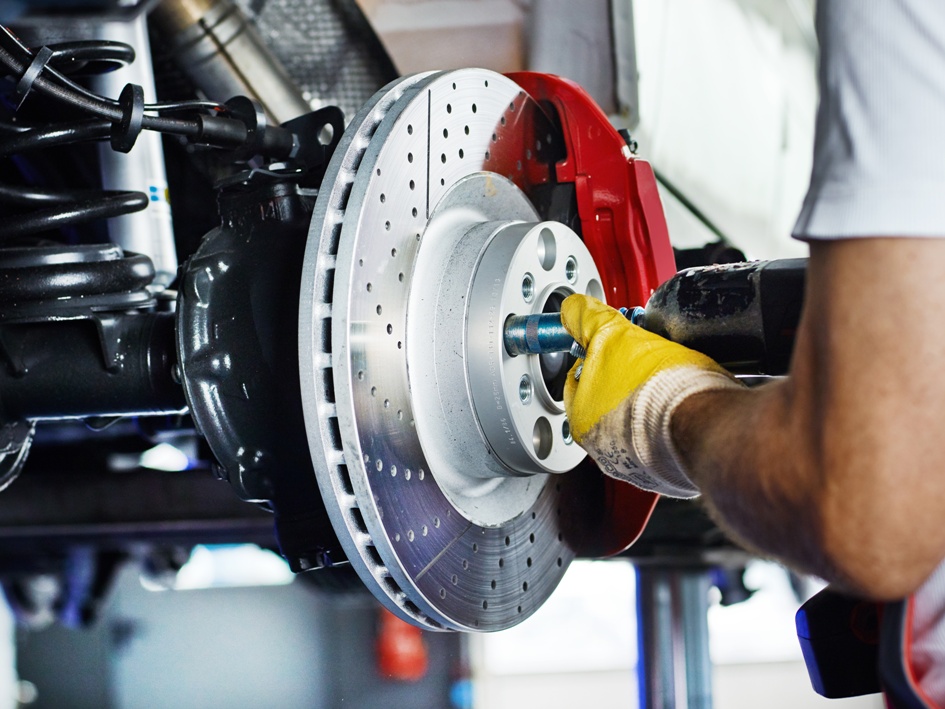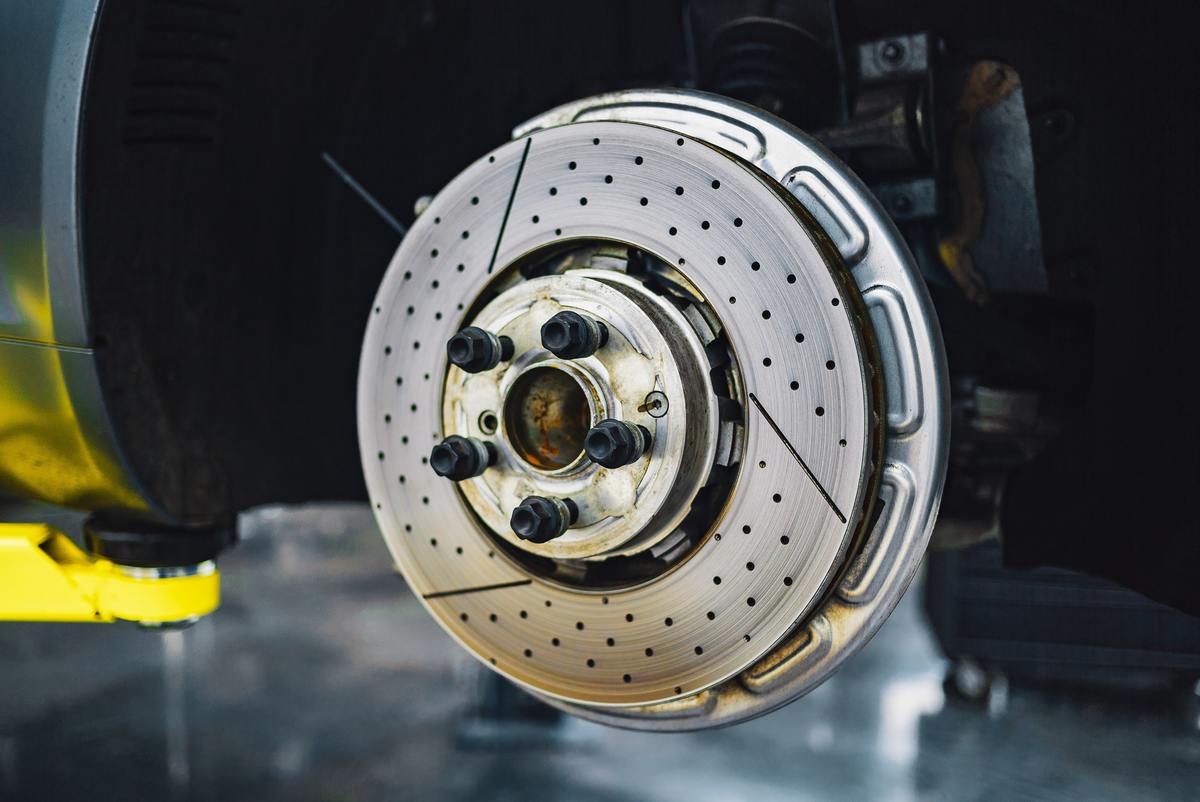Replace your brake pads every 25,000 to 70,000 miles. Inspect them regularly for wear and tear.
Brake maintenance is crucial for vehicle safety and performance. Regular inspections help identify issues before they become serious. Worn brake pads can lead to longer stopping distances and potential accidents. Listen for squeaking or grinding noises, which often indicate worn pads.
Pay attention to any changes in braking efficiency. Check the brake fluid level and quality periodically. Ensure the brake rotors are not warped or damaged. Proper brake maintenance can save lives and reduce repair costs. Always consult your vehicle’s manual for specific recommendations. Regularly servicing your brakes ensures optimal performance and safety. Prioritize brake maintenance to keep your vehicle running smoothly and safely.
Importance Of Brake Maintenance
Brakes are essential for car safety. Regular brake maintenance ensures your vehicle stops efficiently. Poor brake maintenance can lead to accidents. Read on to understand why maintaining your brakes is crucial.
Safety Concerns
Safety is the most critical aspect of brake maintenance. Well-maintained brakes prevent accidents. Faulty brakes can fail in emergencies. Regular checks help identify issues early. This ensures the safety of passengers and pedestrians.
Economic Benefits
Economic benefits are another reason to maintain brakes. Regular maintenance reduces repair costs. Preventative care is cheaper than major repairs. Well-maintained brakes also last longer, saving money in the long run.
| Benefits | Description |
|---|---|
| Safety | Prevents accidents and ensures smooth stopping. |
| Cost Savings | Reduces overall repair and replacement costs. |
| Longevity | Extends the lifespan of brake components. |
- Regular checks help spot issues early.
- Timely repairs ensure safety and save money.
- Proper maintenance extends brake life.

Credit: www.expresscareautomn.com
Signs Of Brake Wear
Understanding the signs of brake wear is crucial for your safety. Recognizing these signs early can prevent accidents and costly repairs. Keep an eye out for these common indicators to ensure your brakes are in top condition.
Squeaking Noises
If you hear a squeaking noise when you brake, it’s a sign of wear. This noise usually indicates that the brake pads are wearing thin. Brake pads have a wear indicator that squeaks when it’s time for a replacement.
Here are common reasons for squeaking noises:
- Worn-out brake pads
- Dust or debris on the brakes
- Moisture causing temporary squeaking
Ignoring this noise can lead to more serious problems. Always inspect your brake pads if you hear squeaks.
Reduced Responsiveness
Another sign of brake wear is reduced responsiveness. If your brakes feel less effective, it’s time for a check. This could mean your brake pads or brake fluid need attention.
Common symptoms of reduced responsiveness include:
- Brake pedal feels soft or spongy
- Car takes longer to stop
- Brake pedal needs more force to engage
Addressing these issues promptly can prevent brake failure. Regular maintenance ensures your safety on the road.
Checking Brake Pads
Brake pads are essential for vehicle safety. They slow or stop your car. Regular checks ensure they work well. Here’s how to check brake pads.
Visual Inspection
Start with a visual inspection. Look through the wheel spokes. You should see the brake pads. Good brake pads have at least 1/4 inch of material. Thin pads mean it’s time to replace them. Check both front and rear brake pads.
Measuring Thickness
Next, measure the thickness. Use a brake pad gauge or ruler. Follow these steps:
- Remove the wheel to access the brake pad.
- Place the gauge on the pad.
- Read the measurement.
New pads are about 12mm thick. Replace pads thinner than 3mm.
| Thickness | Action Needed |
|---|---|
| 12mm | No action |
| 6mm | Monitor closely |
| 3mm | Replace immediately |
Regular checks keep you safe on the road. Inspect and measure your brake pads often.

Credit: www.customcompleteautomotive.com
Brake Fluid Health
Brake fluid is crucial for your vehicle’s braking system. It transfers force into pressure, amplifying braking power. Maintaining brake fluid health is vital for safety and performance. Below, we’ll explore how to check brake fluid levels and identify contamination.
Checking Levels
Regularly checking brake fluid levels is essential. Follow these steps:
- Locate the brake fluid reservoir under the hood.
- Clean the reservoir cap to prevent dirt from entering.
- Check the fluid level against the marked lines: “Min” and “Max”.
- If low, add the recommended brake fluid type.
Always ensure the fluid stays between the “Min” and “Max” lines. This ensures optimal braking performance.
Identifying Contamination
Brake fluid can become contaminated over time. Contaminated fluid affects braking efficiency. Here’s how to identify contamination:
- Color Change: Fresh brake fluid is clear or light amber. Dark fluid indicates contamination.
- Debris: Look for particles or sludge in the fluid.
- Odor: A burnt smell suggests overheating and contamination.
If you notice any of these signs, replace the brake fluid immediately. Keeping brake fluid clean ensures reliable braking.
Rotor Condition
Maintaining your brake rotors is crucial for safe driving. Rotor condition affects braking efficiency. Regular checks help prevent accidents and costly repairs. Below, we discuss key aspects of rotor condition.
Surface Inspection
Regularly inspect the rotor surface for wear and tear. Look for grooves, scoring, or rough patches. A smooth surface ensures effective braking. Use a flashlight for better visibility. Check both sides of the rotor. Uneven wear can indicate other issues.
Warping And Cracks
Warped rotors cause vibrations while braking. You may feel a pulsating brake pedal. Warping occurs due to excessive heat. Hard braking and downhill driving can cause this. Cracks weaken the rotor and affect braking performance. Small hairline cracks are common. Deep cracks require immediate replacement. Use a micrometer to measure rotor thickness. Compare with manufacturer specifications.
Brake Replacement Timing
Understanding the right time for brake replacement is crucial. It ensures safety and optimal performance. Regular checks and timely replacements can prevent accidents and costly repairs.
Mileage Guidelines
Most manufacturers recommend brake replacement every 25,000 to 70,000 miles. This range varies based on vehicle type and usage. Always refer to your vehicle’s manual for specific guidance.
| Vehicle Type | Mileage for Brake Replacement |
|---|---|
| Compact Cars | 30,000 – 50,000 miles |
| SUVs | 35,000 – 60,000 miles |
| Trucks | 40,000 – 70,000 miles |
Keep track of your mileage. Regularly inspect your brakes for wear and tear.
Driving Habits Impact
Driving habits significantly impact brake lifespan. Aggressive driving and frequent braking wear brakes faster.
- City driving: Frequent stops and starts reduce brake life.
- Highway driving: Steady speeds extend brake life.
- Heavy loads: Carrying heavy loads strains brakes more.
Adopt smoother driving habits. This prolongs your brake’s lifespan and enhances safety.
Diy Brake Maintenance
Maintaining your brakes is crucial for your safety. Understanding DIY brake maintenance can save you money and ensure your vehicle’s brakes work correctly. This guide will walk you through the essential tools and step-by-step process to replace your brakes at home.
Essential Tools
Before starting, gather all the necessary tools. Having the right tools ensures a smooth and efficient job.
- Jack and Jack Stands: To lift and secure your vehicle.
- Lug Wrench: For removing the wheel nuts.
- Brake Caliper Tool: To compress the brake piston.
- Socket Set: Various sizes for different bolts.
- Brake Cleaner: To clean the brake components.
- New Brake Pads: Replacement for worn-out pads.
- Gloves and Safety Glasses: For personal protection.
Step-by-step Guide
Follow these steps to replace your brake pads:
- Lift the Vehicle: Use the jack to lift your vehicle. Secure it with jack stands.
- Remove the Wheel: Use the lug wrench to remove the wheel nuts. Take off the wheel.
- Access the Brake Caliper: Locate the brake caliper. Use the socket set to remove the caliper bolts.
- Remove Old Brake Pads: Slide out the old brake pads. Be careful of any clips or springs.
- Compress the Brake Piston: Use the brake caliper tool to compress the piston. This makes room for the new pads.
- Install New Brake Pads: Place the new brake pads into the caliper bracket. Ensure they are seated correctly.
- Reattach the Caliper: Put the brake caliper back over the new pads. Tighten the caliper bolts securely.
- Reinstall the Wheel: Place the wheel back on. Tighten the lug nuts in a star pattern.
- Lower the Vehicle: Carefully lower the vehicle to the ground. Remove the jack stands.
- Test the Brakes: Before driving, press the brake pedal several times. Ensure the brakes are firm and responsive.
Regular brake maintenance is key to safe driving. This DIY guide helps you replace brake pads efficiently. Always prioritize safety and use proper tools.

Credit: www.meineke.com
Professional Brake Services
Brake maintenance is vital for your car’s safety. Professional brake services ensure your brakes work correctly. Expert mechanics know how to inspect and replace brakes.
Choosing A Mechanic
Selecting the right mechanic is crucial. Look for certified technicians with good reviews. Trustworthy mechanics use quality parts. They also provide clear explanations about the repairs.
- Check for certifications
- Read customer reviews
- Ask for a detailed quote
Cost Considerations
The cost of brake services can vary. Prices depend on the make and model of your car. Labor costs also affect the total price. It’s smart to get multiple quotes. This helps you find the best deal.
| Service | Average Cost |
|---|---|
| Brake Pad Replacement | $100 – $300 |
| Brake Rotor Replacement | $200 – $400 |
| Brake Fluid Change | $70 – $120 |
Frequently Asked Questions
When Should Brake Maintenance Be Done?
Brake maintenance should be done every 12,000 miles or annually. Check brakes if you hear unusual noises or feel vibrations.
How Do You Know When Brakes Need To Be Replaced?
You know brakes need to be replaced when you hear squeaking, grinding, or feel vibrations. Reduced responsiveness and longer stopping distances are also signs.
At What Stage Should Brake Pads Be Replaced?
Replace brake pads when they are worn to 3mm or less. Squeaking, grinding noises, or reduced braking performance also indicate it’s time. Regularly inspect every 10,000 miles.
How Do You Tell If Your Brake Pads Are Worn?
Check for squeaking, grinding noises, or reduced braking performance. Inspect brake pad thickness visually. Look for dashboard warning lights.
Conclusion
Regular brake maintenance is vital for safety. Replace brake components when they show wear or respond poorly. Timely replacements ensure optimal performance. Prioritize brake checks to avoid costly repairs and ensure road safety. Stay proactive and keep your brakes in top condition for a smooth driving experience.


